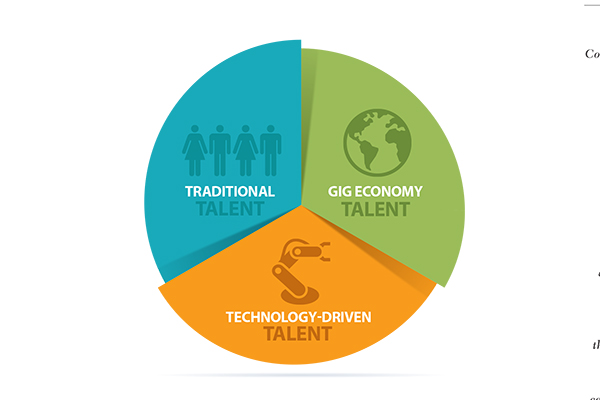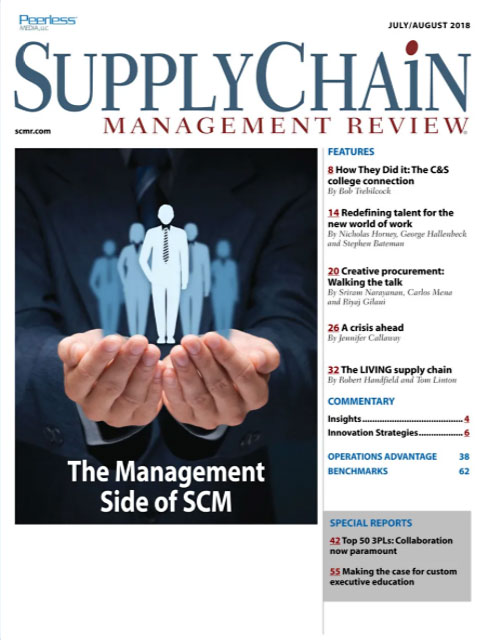Sorry, but your login has failed. Please recheck your login information and resubmit. If your subscription has expired, renew here.
July-August 2018
At Supply Chain Management Review, we’ve been writing about the talent crisis in our profession since at least 2012 when our MIT contributors were publishing a column on talent strategies. Last winter, the topic touched home when I picked up my local newspaper one Saturday morning. One of the lead stories was about two initiatives launched by C&S Wholesale Grocers with two local academic institutions: Keene State College and Franklin Pierce University. Browse this issue archive.Need Help? Contact customer service 847-559-7581 More options
Exponential change is at our doorstep. The World Economic Forum states that we are on the brink of experiencing a Fourth Industrial Revolution. Some predict that we will undergo changes in multiple aspects of our lives in the next five years on a scale comparable to what we experienced in the previous 50 years.
There are good reasons to for supply chain managers to pay attention to these changes. According to research by McKinsey, companies with more agile supply-chain practices had service levels that were seven percentage points higher, and inventory levels that were 23 days lower, than their less agile peers did. One of the key findings reflected the importance of workforce agility and labor flexibility in achieving these results.
We’re already beginning to see the early signs of the unprecedented velocity, scope and impact of these changes on the workplace. In all likelihood, in just a few short years, the talent landscape will look completely different for all functions within a company. While the specifics may vary by industry, no organization is immune to some of the major shifts that are already underway.

This complete article is available to subscribers only.
Log in now for full access or start your PLUS+ subscription for instant access.
SC
MR
Sorry, but your login has failed. Please recheck your login information and resubmit. If your subscription has expired, renew here.
July-August 2018
At Supply Chain Management Review, we’ve been writing about the talent crisis in our profession since at least 2012 when our MIT contributors were publishing a column on talent strategies. Last winter, the topic… Browse this issue archive. Access your online digital edition. Download a PDF file of the July-August 2018 issue.Exponential change is at our doorstep. The World Economic Forum states that we are on the brink of experiencing a Fourth Industrial Revolution. Some predict that we will undergo changes in multiple aspects of our lives in the next five years on a scale comparable to what we experienced in the previous 50 years.
There are good reasons to for supply chain managers to pay attention to these changes. According to research by McKinsey, companies with more agile supply-chain practices had service levels that were seven percentage points higher, and inventory levels that were 23 days lower, than their less agile peers did. One of the key findings reflected the importance of workforce agility and labor flexibility in achieving these results.
We're already beginning to see the early signs of the unprecedented velocity, scope and impact of these changes on the workplace. In all likelihood, in just a few short years, the talent landscape will look completely different for all functions within a company. While the specifics may vary by industry, no organization is immune to some of the major shifts that are already underway.
SC
MR


Latest Supply Chain News
Latest Podcast

 Explore
Explore
Business Management News
- AdventHealth named top healthcare supply chain by Gartner
- Unlocking retention: The role employee engagement plays
- Can supply chain managers embrace an entrepreneurial mindset?
- Challenges to ESG reporting
- With capacity to spare, logistics real estate demand remains subdued
- How to improve demand forecasts for new product families
- More Business Management
Latest Business Management Resources

Subscribe

Supply Chain Management Review delivers the best industry content.

Editors’ Picks





